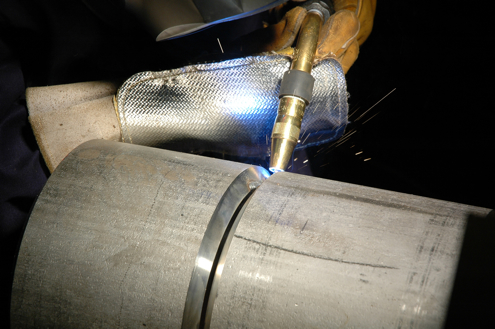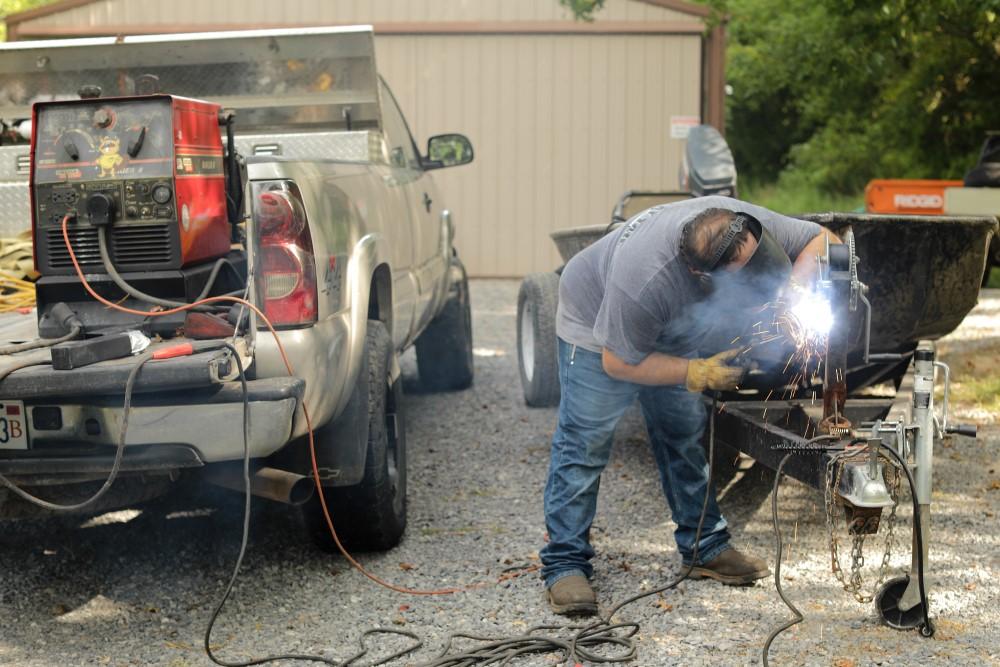Common problems explained and solved by Montana Mobile Welding and Repair Belgrade Fabrication
Everything about Welding: Trick Insights Into Techniques and Ideal Practices for Success
Welding incorporates a selection of techniques, each matched for particular products and applications. Understanding these approaches, such as GMAW, SMAW, and TIG, is necessary for achieving suitable outcomes. The appropriate tools and security practices can not be ignored. As preparation and fixing play essential duties in the welding process, mastering these aspects can significantly boost the quality of the last product. What are the key elements that ensure a successful weld?
Understanding Different Welding Techniques
Welding methods include a range of approaches, each suited to details applications and materials. Among one of the most common strategies are Gas Steel Arc Welding (GMAW), Shielded Metal Arc Welding (SMAW), and Tungsten Inert Gas Welding (TIG) GMAW, additionally called MIG welding, is popular for its rate and adaptability, making it perfect for slim products. SMAW, or stick welding, is favored for its simpleness and performance in outside settings, particularly with thicker steels. TIG welding supplies accuracy and control, making it ideal for detailed work and non-ferrous metals (Belgrade Fabrication). Each method has its unique benefits and factors to consider, enabling welders to select the most effective method based upon the task's needs, product type, and preferred end results. Recognizing these strategies is necessary for successful welding
Important Welding Tools and Devices
While different welding techniques call for specific skills, the appropriate equipment and tools are just as important for achieving high quality outcomes. Essential welding devices consists of welding devices, which differ relying on the technique-- such as MIG, TIG, or stick welding. Protective gear, including aprons, headgears, and handwear covers, assurances safety and convenience during the procedure. Furthermore, clamps and fixtures aid safeguard materials in position, making certain accuracy in welds. Consumables like welding poles, cord, and securing gas are also vital components that affect the high quality of the weld. In addition, devices such as cutters and grinders promote surface area prep work and post-weld ending up, adding to a professional end result. Purchasing premium tools ultimately enhances the effectiveness and efficiency of welding tasks.
Security Practices in Welding
Proper safety techniques are important in the welding market to safeguard workers from potential hazards. Welders should wear appropriate individual protective tools (PPE), including safety helmets with correct shading, handwear covers, and flame-resistant apparel. Adequate air flow is vital to lower exposure to harmful fumes and gases generated during the welding procedure. Furthermore, employees need to be educated in the proper handling of welding devices to avoid crashes. Fire precaution, such as keeping flammable products away from the welding area and having fire extinguishers easily offered, are needed. Regular examinations of equipment and workspaces can assist recognize possible hazards before they lead to accidents. By adhering to these security methods, welders can create a safer working setting and minimize risks related to their profession.
Preparing Products for Welding
Preparing materials for welding is a vital action that substantially affects the quality and honesty of the end product (Montana Mobile Welding and Repair Belgrade). Appropriate preparation includes cleansing the surfaces to remove pollutants such as dirt, corrosion, and oil, which can endanger the weld. Techniques such as grinding, sanding, or utilizing solvents are generally used to accomplish a tidy surface area. Furthermore, guaranteeing that the materials fit together snugly is important; gaps can result in weak welds. It's likewise essential to think about the alignment and positioning of the parts, as this will certainly impact the ease of welding and the last end result. Finally, selecting the suitable filler product and making sure compatibility with the base steels is vital for achieving solid, durable welds
Tips for Getting High-Quality Welds
Achieving high-grade welds needs focus to information and adherence to finest techniques throughout the welding process. Correct joint prep work is crucial, making sure surfaces are clean and totally free from pollutants. Picking the ideal filler material and welding strategy based on the base metals is important for optimal bonding. Keeping consistent traveling rate and angle while welding can prevent flaws and advertise harmony. Additionally, controlling warm input is necessary; too much heat can cause warping and weakened joints. If needed, regularly examining the welds throughout the process allows for immediate modifications. Lastly, utilizing suitable post-weld treatments, such as cleaning and anxiety alleviation, can enhance the resilience and integrity of the weld, inevitably making sure a successful end result.
Troubleshooting Common Welding Issues
Welding usually offers difficulties that can influence the quality and honesty of the last item. Typical issues such as porosity, inconsistent weld beads, and getting too hot can arise, each calling for details troubleshooting methods. Recognizing these issues is vital for welders to enhance their abilities and attain perfect results.
Porosity Problems Discussed
Porosity can frequently be overlooked, it remains an important problem in welding that can compromise the integrity of an ended up product. Porosity refers to linked here the presence of tiny gas pockets within the weld bead, which can lead and deteriorate the joint to premature failure. This issue usually occurs from contaminants, wetness, or inappropriate securing gas insurance coverage during the welding process. To mitigate porosity, welders should verify that the base products are dry and clean, make use of suitable protecting gases, and preserve regular welding parameters. Regularly evaluating the tools and environment can likewise aid identify prospective issues prior to they show up in the weld. Addressing porosity effectively is important for achieving solid, long lasting welds that satisfy quality criteria.

Inconsistent Weld Beads
Irregular weld beads can greatly influence the top quality and stamina of a completed product. Different factors add to this concern, including inappropriate travel speed, inaccurate amperage setups, and irregular electrode angles. When the welder moves also promptly, a grain may show up narrow and lack infiltration, while relocating also gradually can cause extreme buildup. Furthermore, utilizing the incorrect amperage can cause either damaging or extreme spatter, both of which concession weld integrity. The welder's technique, such as inconsistent lantern motion, can additionally cause irregular bead appearance. To alleviate these troubles, welders should concentrate on keeping steady, controlled motions and ensuring appropriate equipment setups to achieve uniformity in their welds. Consistency is key to accomplishing strong and trusted welds.
Overheating and Warping Issues
Extreme warmth during the welding process can cause considerable getting too hot and contorting issues, impacting the structural honesty of the workpiece. These Click Here issues often manifest as distortion, which can endanger alignment and fit-up, making further assembly challenging. Aspects adding to overheating include the choice of welding criteria, such as voltage and travel speed, along with the type of material being welded. To reduce these issues, welders ought to maintain constant travel speed and appropriate warm input while keeping track of the work surface temperature level. Additionally, pre-heating or post-weld warmth treatment can aid alleviate stress and anxieties caused by quick cooling - Montana Mobile Welding and Repair Belgrade. Normal examination and adherence to finest practices are essential in stopping getting too hot and making certain the long life and reliability of bonded frameworks
Frequently Asked Concerns
What Are the Profession Opportunities in the Welding Industry?
The welding sector offers varied job opportunities, including positions as welders, examiners, engineers, and teachers. Experts can operate in manufacturing, building, aerospace, and auto sectors, gaining from strong need and affordable incomes in numerous duties.
How Can I Boost My Welding Rate Without Sacrificing High Quality?
To boost welding speed without compromising high quality, one should exercise effective strategies, maintain devices, enhance setups, and boost hand-eye control. Routine training and seeking comments can also considerably add to accomplishing quicker, high-quality welds.
What Accreditations Are Offered for Welders?
Various certifications exist for welders, consisting of those from the American Welding Culture (AWS), the National Facility for Construction Education and Study (NCCER), and numerous industry-specific companies. These qualifications boost employability and show skill efficiency.
Exactly How Does Welding Affect the Properties of Metals?
Welding influences the homes of steels by modifying their microstructure, which can result in changes in solidity, ductility, and strength. Warmth input and air conditioning rates during the process substantially affect these material features.
Can I Weld Dissimilar Metals Together?
